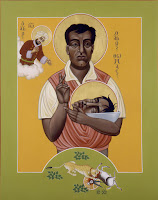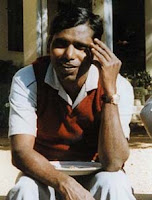SERVANT of GOD GEORGE J. WILLMANN, S.J. was born in Brooklyn , New York
From 1902 to 1908, George studied at the Our Lady of Good Counsel Grammar School in Brooklyn , and from 1908 to 1913 and at the Boys High and Brooklyn Preparatory High School. On August 15, 1915, He entered the into Society of Jesus Seminary at Poughkeepsie, New York .
He was then sent to the Philippines in 1922 as a seminarian for a teaching stint at the Ateneo de Manila, later returning to the United States
In June 20, 1928, he was ordained at the Woodstock College in Maryland by Archbishop Michael Joseph Curley. Father George served as Director of New York Jesuit Seminary and Mission Bureau from 1930 to 1936. Then he returned to the Philippines
In 1938, Father Willmann established the Catholic Youth Organization in the Philippines
In 1941 Servicemen clubs were established under the guidance of the Army-Navy Morale Committee, of which Father Willmann and the auxiliary bishop of Manila
On July 1, 1975, Father George was granted Filipino citizenship by then President Ferdinand Marcos for his "virtuous acts, compassionate and kind and loving service for the Filipino people.”
On June 29, 1977, Pope Paul VI awarded him the Pro Ecclesia et Pontifice medal.
Father Willmann later went to New York presumely to pay a visit to his sisters, Ruth, and Agnes, nuns living in Roslyn. He was prone to falls because of weaking limbs and had a fall while he was in New York New York
Father Willmann died on September 14, 1977, due to cardiac arrest. His remains were interred at the Jesuit Cemetery in Novaliches, Quezon City, Philippines .
"He spent all 40 years of his priesthood here in the Philippines
Father Willman is now one of eight Filipinos currently undergoing the process for beatification and canonization















































































